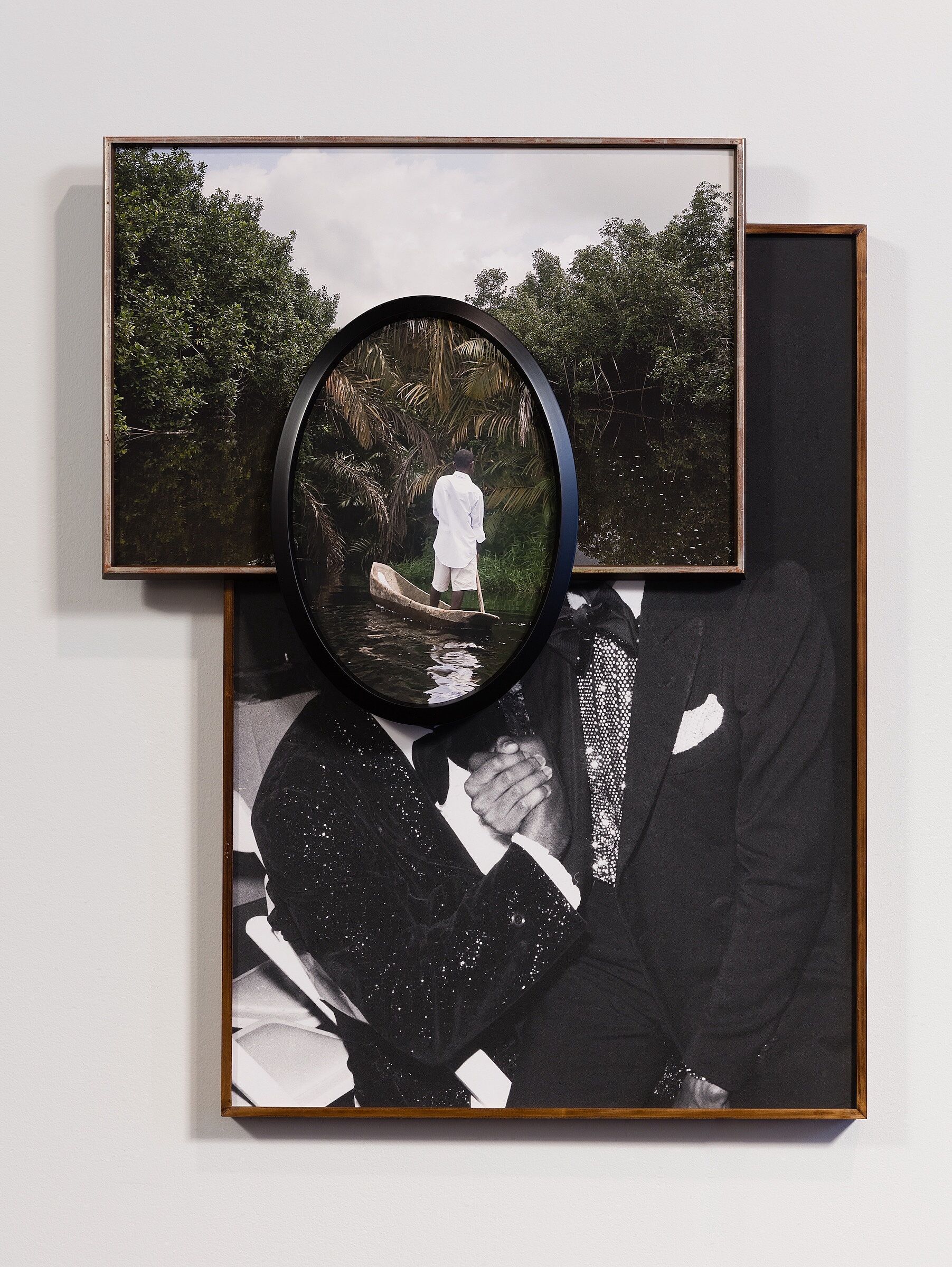Whitney Biennial 2019 | Art & Artists
May 17–Oct 27, 2019
Whitney Biennial 2019 | Art & Artists
Todd Gray
27
Floor 6
Born 1954 in Los Angeles, CA
Lives in Los Angeles, CA, and Akwidaa, Ghana
Todd Gray’s works draw from his archive of photographs amassed during the past forty-five years. Taken in locations from Hollywood to Ghana (where he maintains a studio), these images have been selected by the artist to explore the complex interrelation of Blackness, diasporic identity, and historic systems of exploitation. For his ongoing series Exquisite Terribleness, begun in 2013, Gray collages photographs into layered arrangements of thrift- store frames, creating compositions of fragmented bodies. Many of the individual photographs Gray uses for the collages were shot following his own creative vision; others were commissioned, including many he took as Michael Jackson’s personal photographer in the 1970s and early 1980s. Jackson is significant here for Gray not as a celebrity or a figure of controversy, but as a global phenomenon whose almost mythic status serves to frame the complex issues explored in Gray’s work.
Michael Jackson was accused of child sexual abuse in 1993 and then tried and acquitted for the crime in 2005. New allegations surfaced in a documentary released on HBO earlier in 2019.
Pax 3, 2017
-
0:00
Todd Gray
0:00
Todd Gray: It’s a photograph I took of Michael Jackson sitting on the lap of Chuck Berry.
Narrator: The photographer Todd Gray discusses his work Pax 3.
Todd Gray: This is a work I made when I was employed with Jackson as his personal photographer back in the eighties. And I use my archive to talk about African diaspora, to talk about post-colonialism. And I was thinking, who is the most recognized Black body on the planet? And of course, that would be Michael Jackson. So I don't use his likeness to talk about him. I use that likeness to talk about the African body, the Black body.
Then I have a landscape photograph of a mangrove in Ghana which is near where my studio is. And then a photograph of a person in a dugout canoe in their colonial whites.
Narrator: Gray has a studio in Ghana, and lives there much of the year.
Todd Gray: It really caught my eye because it talks about how one creates value on one’s body. How one mimics the colonizer in order to show that they are modern.
In the image you see this man in a dugout canoe going into the bush, into the darkness. And that is covering the faces of Chuck Berry and Michael Jackson. So theoretically or metaphorically, they're going into their heads, into their consciousness. So, we're going, as you're seeing it in the present moment, you're actually seeing something that's going into the past, perhaps. Or that was my idea about time shifting and retreating into the past, and going into memory. Memory of when we were in Africa. Memory that I'm hoping will be evoked with this piece by the viewer.

